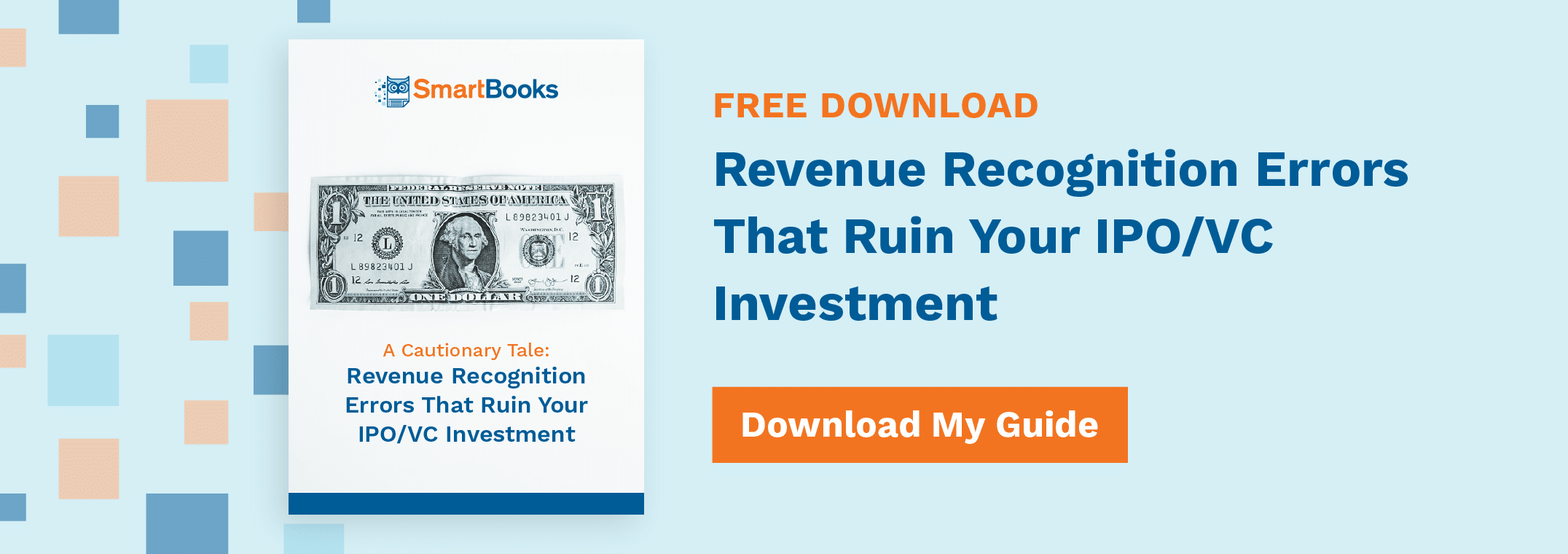How the New Revenue Recognition Standards Could Impact Your Company

Changes are coming to the revenue recognition world.
To put that more accurately, revenue recognition changes are already in place for public entities, but for us private companies, the clock is running out.
When’s the Deadline?
It’s coming, quick! For public entities reporting under U.S. Generally Accepted Accounting Principles (GAAP), the changes took effect on December 15, 2017—meaning this article isn’t for you.
But for the rest of us (private entities and most small businesses) reporting under GAAP, the changes take effect on December 15, 2018. Those reporting under the International Financial Reporting Standards (IFRS) have until January 1, 2018.
What Are the Changes?
The new standards set forth by the Financial Accounting Standards Board (FASB) spell out changes – when and how – revenue recognition is managed. Primarily, these changes have to do with your company’s performance obligations to each client with regards to how goods or services are bundled.
For each product or service you provide, you’ll need to clearly define whether it:
- Should be considered a unique performance obligation
- Must be bundled until the performance obligation is met
For a performance obligation to be considered “distinct,” it must meet two criteria:
- The customer can benefit from the product or service either on its own or paired with resources readily available to the customer
- Your company’s obligation to transfer the good or service is separately identifiable from other obligations stated in the contract
The second criterion is more subjective, so it’s the more difficult of the two to handle. Your business will need a thorough evaluation of your contracting language to make sure these distinctions are possible.
Big Changes for Small Businesses
For small businesses that want to achieve compliance with the FASB’s new revenue recognition standards, a full audit of the language in your client contracts might be required with a special focus on individual services, add-ons, or supplementary products offered to each customer.
While this audit will be different for every industry, here’s an example of the edits, which should:
- Align the total transaction price with each performance obligation identified in the contract.
- Determine the transaction price and identify whether the price is fixed or variable in nature.
- Identify the contracts with each customer and making sure there are enforceable rights and obligations from both parties.
- Note each performance obligation in the contract and ensure each obligation is distinct within the context of the contract.
- Recognize revenue as your company fulfills its obligation to the customer.
Achieving Revenue Recognition Compliance
Hopefully, your business has already taken steps to account for this increased scrutiny, because the deadline is fast approaching. This change is just one of many made over the past few years to help companies corral their revenue recognition standards. As time goes on, this type of scrutiny will only increase.
Get a handle on your contracts and make sure you’re ready when the deadline hits.
